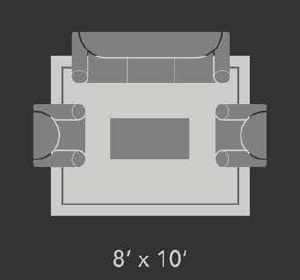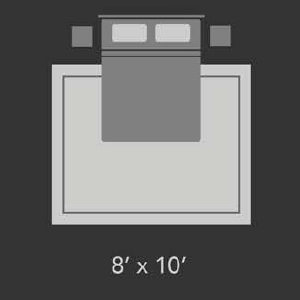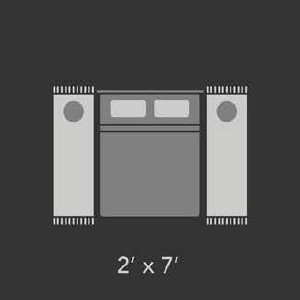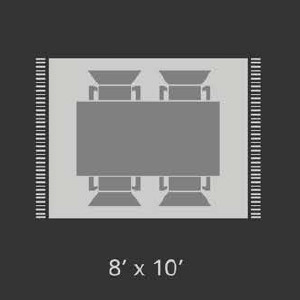The Kaleen
STORY OF QUALITY, CRAFTSMANSHIP
AND HUMAN COMPASSION.
For more than fifty years, the Rathi family has built a reputation as one of the leading distributors, importers and manufacturers in the textile industries. Since its inception in 1996, Kaleen Rugs has become known for producing the highest quality rugs and broadloom at affordable prices. Kaleen’s unique and stunning designs have captured the attention of celebrities, high-end retailers and interior designers from around the world.
Each rug Kaleen produces is truly a unique work of art. Our story starts with sourcing high quality wool from all around the world which ensures consistent quality year after year. The wool is then blended and spun by hand to create our truly unique yarn. The Kaleen yarn is then hand dyed using several different techniques creating vibrant, rich colors in a variety of styles and shades.
Kaleen’s Master Weavers still use ancient rug making techniques such as hand knotting and hand tufting when creating our rugs. Once crafted, Kaleen rugs are then carved by hand and then treated with our proprietary organic latex. The Kaleen latex is equally as important and unique to our process of creating a tufted rug. Our latex protects our rugs from breakage and naturally acts as a mold preventative.
Eco-friendly manufacturing, organic materials and a deep compassion for life on earth is what makes Kaleen more than just a brand – it’s a lifestyle. Kaleen’s manufacturing facilities are Green Energy Certified and harness electricity from the sun using solar panels and use water recycling systems for clean water.
Kaleen manufacturing facilities are ISO 9000 & SA8000 certified and implore an effective quality assurance program that includes the constant checking and maintaining of the eight management principles which all requirements are based upon.
Types of Construction.
HAND-KNOTTED
A high-end rug that usually takes multiple weavers many months to make. Each knot is hand-tied and the production process is long and complex. Large rugs may have millions of “knots” used to make a future “antique rug” and the perfect family heirloom.
HAND-TUFTED
Kaleen’s hand-tufted rugs are typically made using 100% imported wool or a wool-blend. Due to their thick piles and the way they are constructed, hand-tufted rugs are great to use in heavy traffic areas and will provide beauty for many years to come.
When making a hand-tufted rug the first step is always the design. With the use of a tufting gun, skilled artisans punch Kaleen’s unique, hand-dyed yarns through the canvas bringing each rug to life, strand-by-strand.
HAND-WOVEN/HAND-LOOMED
Requiring expert knowledge, skilled artisans are necessary for this traditional method of weaving that produces flat rugs with highly detailed patterns. A precise manual weaving technique, involving vertical or horizontal looms, carried out by highly skilled artisans. These are done on a loom and the process takes 1-4 people depending on the size of the rug. On the loom, the yarn or weft is thrown through the middle of the bottom and top warp. The weaver then compacts the rug with the beater and the weft and warp are woven together. This alone is considered a flatweave. A pile is a difference between a flatweave and a loomed rug.
POWER-LOOMED/MACHINE-MADE
Machine-made rugs, also known as machine-woven or loom woven rugs, are rugs woven on power looms operated either by hand, machine, or computer. Moreover, machine-made rugs can imitate the patterns used in the most popular handmade designs at much more affordable prices.
TABLE-TUFTED
To cater to diverse requirements for more economical products and faster lead times, this technique has emerged. It’s basically like the hand-tufted process with a change of using a modified sewing machine to do the tufting.
PIT-LOOMED
Pit-Loom is set by sinking four posters into the ground and with an overhang slay. In case of pit loom, the yarn work inside the pit so that the warp yarn may absorb moisture and better weaving will result. In this loom, the combination of slaying and shuttle boxes.
BRAIDED
A flat braid construction is a common construction as it is one of the easier and more classic methods. Three ropes of fabric or yarn are intertwined. A yarn braid construction evolves from yarn in its initial state to a uniquely finished area rug. Braiding is an extremely old yet versatile technique that has been modernized over recent decades to display its appeal and charm.
Rug Sizing by Room.
To find the right rug sizes for your home, consider the size of each room and the room’s furniture groupings – measuring the room and the furniture as a first step. Then choose a rug layout from the typical options below.
LIVING ROOM



BEDROOM



DININGROOM



Living Room
Your living room shape, not just the furniture, should dictate the rug size and orientation to make the space look larger and feel connected. There are three main layouts: all furniture legs resting on the rug, just the front legs on the rug, or all furniture – except for the coffee table – off the rug.
ALL LEGS ON THE RUG
This layout, which requires the largest rug, is the best choice for anchoring a living room within an open-concept space or for any furniture grouping that floats (has no furniture against a wall). Placing all furniture on the rug will unify the pieces and create a defined seating area.
FRONT LEGS ON THE RUG
This versatile option works especially well when one edge of the furniture grouping is against a wall. (You don’t need to pay for a rug to cover a spot no one sees!) For a cohesive look, choose a rug size that allows for only the front legs of every piece of furniture in the grouping to be on the rug.
ONLY A COFFEE TABLE ON THE RUG
Perfect for small or narrow spaces, this layout plays off the room’s scale to make it feel larger. To get the proportions right, base the rug size on the interior dimensions of your seating area – and not just the coffee
table – so it fills the negative space created by your furniture grouping.
Bedroom
As the focal point of the room, your bed should also be the base for rug placement. Not only will this further define space, but it will also give your feet a soft spot to land each morning.
ALL LEGS ON THE RUG
This all-inclusive layout extends beyond the bed to its accompanying furniture, like nightstands or a bench but does not include bedroom pieces along other walls, like dressers. We recommend having the rug extend at least 18” – 24” past the edge of your bed. If you can, do not allow the rug to encroach upon any main walkways.
2/3 BED ON THE RUG
Frame your bed with this popular option, which doesn’t quite extend up to your nightstands, but still allows for 18” – 24” of room on the sides and past the foot of the bed. For a symmetrical finish, an 8 x10 rug is best for queen beds and a 9 x12 for a king.
RUNNERS ON EACH SIDE
This flexible choice works for spaces and beds of all sizes – and is an excellent option if two sides of the bed sit against a wall. Scale matters for this look: The runner shouldn’t extend beyond the bed itself but should be a bit wider than your nightstand.
Dining Room
Both the shape of your room and dining table should impact whether it’s rectangular or round.
ALL LEGS ON THE RUG
We recommend sticking with all legs on the rug for this room – for safety’s sake. The rug should extend at least 24” and no more than 36”, beyond all sides of the table, so chairs can sit on a flat surface, even when they are pushed back. Don’t forget to account for extendable leaves, if your table has them.